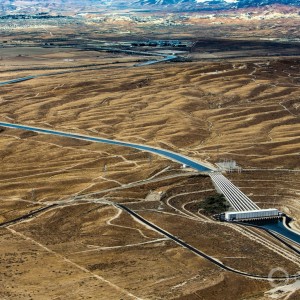The Stream, February 9: Sea Level Rise Will Last Thousands of Years, Study Finds
The Global Rundown
Rising sea levels will have consequences for human civilization thousands of years into the future, even if global temperature increases are contained, scientists found. To protect Tokyo from rising seas and floods, some architects have proposed rebuilding islands in Tokyo Bay. Meanwhile, Australia is planning major cuts to the climate research team at its national science agency. A drought is exacerbating food insecurity in Somalia, Iran faces a water scarcity challenge as it boosts agricultural production, and millions of hectares of forest in key watersheds are at risk from fire in the western United States. The Ebro River Delta in Spain is threatened by water diversions and dams.
“We are ready for a big leap in the post-sanctions era. We hope by removing the shackles of sanctions from our farmers’ hands, we can see an increase in production and even exports.” –Amir Hossein Shahmir, head of international trade at Iran’s Government Trading Corporation, on the country’s plans to improve agricultural production. Water scarcity and a lack of irrigation could be significant challenges. (Reuters)
By The Numbers
38 percent Proportion of Somalia’s population that is food insecure and will need humanitarian assistance over the next five months, according to the United Nations. Drought and trade disruptions are blamed for poor food access, which is of particular concern for displaced populations. FAO
350 jobs Number that will likely be cut over the next two years at CSIRO, Australia’s national science agency, as the country shifts its focus away from climate change research and toward climate adaptation. Guardian
Science, Studies, And Reports
Sea levels are set to rise 25 meters over the next 2,000 years, even if global temperature increases are limited to 2 degrees Celsius, according to a new study published in the journal Nature Climate Change. The predictions have serious implications for human civilization far into the future, with entire cities at risk, the study’s authors said. Guardian
About 65 percent of public water supplies in the western United States come from forested watersheds, putting water quality at risk when there are large wildfires. Forty percent of the 13.7 million hectares of high fire-risk land in important water supply watersheds are privately or family owned, according to a report by the American Forest Foundation, meaning property owners may have difficulty affording forest management activities to prevent fires. USDA
On The Radar
Dams and water diversions for irrigation and development are threatening the survival of the Ebro River Delta in Spain. Sediments deposited in the delta have declined by 90 percent, and some conservationists worry that the government could transfer more river water out of the basin. BBC News
Architects and engineers have proposed a plan to safeguard Tokyo against future floods and sea-level rise by rebuilding the city on reclaimed islands in Tokyo Bay. The proposal also includes provisions for a towering residential skyscraper that could harvest water from the clouds. CityMetric
A news correspondent for Circle of Blue based out of Hawaii. She writes The Stream, Circle of Blue’s daily digest of international water news trends. Her interests include food security, ecology and the Great Lakes.
Contact Codi Kozacek






Leave a Reply
Want to join the discussion?Feel free to contribute!